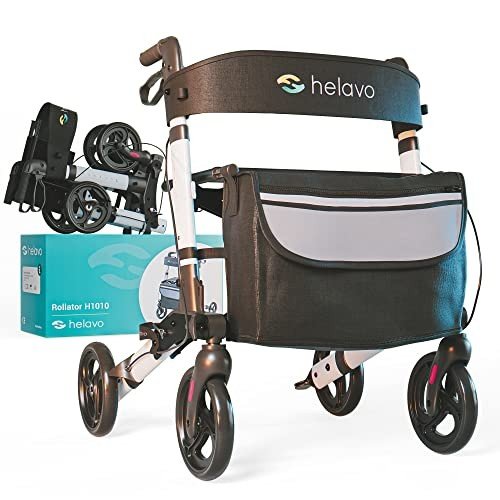A Comprehensive Guide to Senior Walkers: Enhancing Mobility and Independence
As people age, maintaining mobility becomes essential for preserving self-reliance and lifestyle. For lots of seniors, Walking Frame aids such as walkers offer a valued solution to assist them browse their environment safely and with confidence. This post looks into the diverse world of senior walkers, including their types, benefits, use, and some frequently asked questions.
Understanding Senior Walkers
Walkers, frequently referred to as walking frames, are mobility aids developed to provide assistance and balance for people who may have difficulty walking individually. They usually include a sturdy frame, grips for holding, and often, wheels for ease of motion. Understanding the various types of walkers readily available can assist seniors and their caretakers make knowledgeable choices.
Kinds Of Senior Walkers
| Walker Type | Description | Best For |
|---|---|---|
| Requirement Walker | A four-legged frame that should be lifted to move forward. | Seniors requiring optimum stability. |
| Two-Wheeled Walker | A walker with two wheels on the front for much easier mobility. | Those with small balance problems. |
| Four-Wheeled Walker | A walker with four wheels, frequently consists of a seat and brakes. | Active seniors needing mobility and pause. |
| Rollator With Storage Walker | A kind of four-wheeled walker that is Lightweight 4-Wheel Rollator Walker with Seat - Blue and foldable. | Seniors who are more active and require slight assistance. |
| Platform Walker | A specialized Helavo 2-in-1 Walker & Wheelchair: Ultimate Mobility with a platform for support, frequently utilized in physical treatment. | People needing specific support for injuries. |
Benefits of Using Senior Walkers
Senior walkers supply numerous benefits that considerably boost the mobility and self-reliance of elderly individuals. Here are a few of the most noteworthy benefits:
- Increased Stability: Provides a strong base of support, decreasing the risk of falls.
- Enhanced Confidence: Bariatric Rollator - click over here now, Encourages motion and can alleviate anxiety about walking.
- Enhanced Posture: Helps maintain an upright posture while walking.
- Social Engagement: Facilitates participation in social activities by making it possible for mobility.
- Therapeutic Use: Can be used during rehabilitation to enhance strength and balance.
Selecting the Right Walker
When selecting a walker, numerous factors ought to be considered to ensure the best fit. Below are crucial points seniors or caregivers should assess:
- Weight Capacity: Ensure the walker can support the user's weight.
- Height Adjustability: A proper height adjustment is vital for convenience and efficiency.
- Mobility Needs: Consider the user's specific needs, such as level of stability needed.
- Lifestyle Factors: Think about where the walker will be used and how regularly.
Appropriate Use of Walkers
To optimize the benefits and decrease risks connected with walkers, appropriate usage methods are vital. Here are actions seniors must follow:
- Stand in the Walker: Position the walker in front of them, guaranteeing it is steady.
- Grip the Handles: Hold the manages strongly, making sure a comfy grip.
- Stroll Inside the Frame: Move forward by taking little steps, guaranteeing the front legs of the walker remain on the ground.
- Turn with Care: To alter direction, pivot on the feet while moving the walker.
- Use Cautiously: Avoid hurrying and remember to take breaks when tired.
Frequently Asked Questions (FAQs)
What is the average cost of a senior walker?
The price of senior walkers can differ based on functions and products used. Requirement walkers might cost as low as ₤ 30, while sophisticated models with wheels and seats may range from ₤ 50 to ₤ 150.
How do I figure out if my liked one needs a walker?
Signs that a senior might require a walker can include regular stumbling or losing balance, a current surgery or injury impacting mobility, and preventing walking or taking part in social activities.
Can a walker assist with rehabilitation workouts?
Yes, walkers can be an essential part of physical therapy, assisting seniors gain back strength and dexterity through safe motion.
Where can I acquire a senior walker?
Walkers can be acquired at medical supply shops, drug stores, or online merchants. Some insurance coverage plans might even cover part of the expense.
How do I maintain a senior walker?
Regular maintenance involves looking for loose parts, making sure brakes operate properly, and cleaning the frame to prevent rust or wear.

Senior walkers are an indispensable resource for preserving mobility and self-reliance as one ages. With numerous kinds of walkers offered, it is important for seniors and caretakers to think about individual needs, use, and comfort when picking an appropriate walking aid. By motivating safe mobility, walkers not just improve physical abilities however also favorably impact social connections and mental health and wellbeing.
Through appropriate usage and care, seniors can delight in an active, interesting way of life, bolstered by the support of their walker. Comprehending the significance of mobility aids like walkers is essential in promoting improved life quality for seniors facing mobility obstacles.
